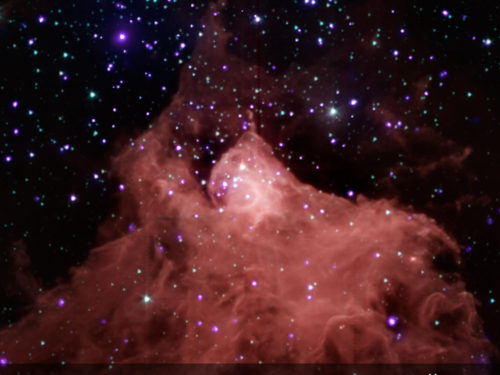A Star is Born
Psalm 19:1
“The heavens declare the glory of God; and the firmament sheweth his handywork.”
 If I have commented on problems with the Big Bang Theory, I have sometimes been told that we have witnessed stars being born. Deep-time astrophysicists often point to so-called stellar nurseries to make their point. One such nursery can be seen in the constellation known as Cepheus. Evolutionary astrophysicists point to a molecular cloud, visible in the constellation, using the Hubble Space Telescope. Within this cloud can be seen a number of stars, referred to as protostars. According to their model, this cloud is collapsing under gravitational collapse, and the resulting energy has to be dissipated by energy, resulting in the ignition of a protostar. Therefore, what we are seeing is a snapshot of the birth of a star.
If I have commented on problems with the Big Bang Theory, I have sometimes been told that we have witnessed stars being born. Deep-time astrophysicists often point to so-called stellar nurseries to make their point. One such nursery can be seen in the constellation known as Cepheus. Evolutionary astrophysicists point to a molecular cloud, visible in the constellation, using the Hubble Space Telescope. Within this cloud can be seen a number of stars, referred to as protostars. According to their model, this cloud is collapsing under gravitational collapse, and the resulting energy has to be dissipated by energy, resulting in the ignition of a protostar. Therefore, what we are seeing is a snapshot of the birth of a star.
However, in order to demonstrate that this really is the birth of stars, we would have to observe the stars develop into fully fledged stars. But the models would suggest that this takes millions of years. This subtle point, therefore, needs to be made – in this cloud in Cepheus, we are not witnessing the process of stellar birth. Instead, we are looking at an interesting image of something which is certainly there, but which is being interpreted as stellar birth by scientists who accept that model. Offering this snapshot as evidence of stellar evolution requires the prior acceptance of the stellar evolutionary model. This can be recognized as circular reasoning – which is a logical fallacy. It makes more sense to accept the eyewitness account, given to us in Genesis 1 by God Himself. Author: Paul F. Taylor
We read in Your word, Lord God, that the Heavens declare the Glory of God. We love to look at what You have created in the universe, therefore, and praise and magnify Your Name. Amen.
Ref: Encyclopaedia Britannica, < https://www.britannica.com/science/molecular-cloud#ref282024 >, accessed 4/30/2018. Image: NASA, Public Domain.